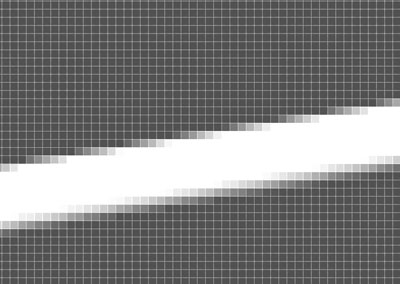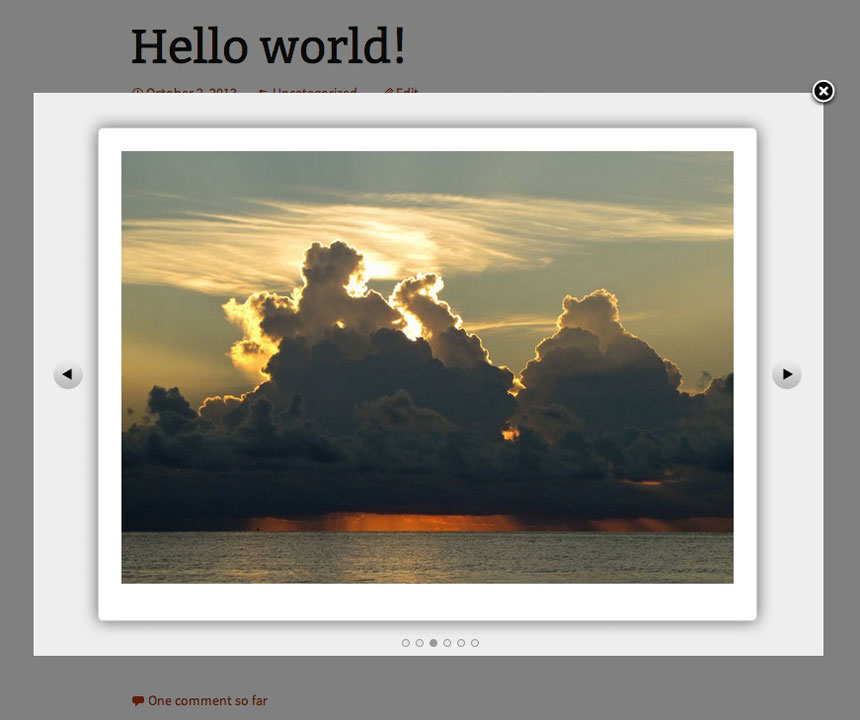When recently confronted with the decision to purchase a new laptop I was originally intrigued with the idea of buying a Chromebook. A Chromebook is basically a laptop device that runs the chrome operating system which is a hardware specific version of chromium OS which is built on Linux. The attractive aspect of the Chromebook was the relatively low price and the fact I did not want to deal with Windows. I was only looking for some lightweight portable computing. If you are an active Gmail and Google Drive user then a Chromebook can be a viable option. I briefly considered the tablet option but to get the screen size the Chromebooks were cheaper.
When I visited some retailers to check one out I found the availability of the Chromebook was limited and the Samsung Chromebooks had some battery/charging issues. I began to start thinking that if was going to go to a Linux based system then there were other options. About 7 years ago I actually ran Fedora Linux on my Mac G4. It ran fine and was impressed by the fact I was using a fully functioning operating system that wasn't Windows or Mac, but I had no real reason to switch from OS X at the time. For a new laptop I was ready to dive into the Linux option full on.
With most PC hardware Ubuntu is probably the most popular Linux distribution. As I mentioned earlier, my goal was to get some lightweight portable computing at a low price. I was content with purchasing old hardware for this purpose. Before I began the hardware search I created a bootable Ubuntu installation USB stick. I chose 32 bit since it was recommended for setups with less memory and I knew older hardware would have less. The USB stick allows you to boot Ubuntu and run it in test mode without actually installing, which allows you to test compatibility. The unit I ended up purchasing was an HP Probook about 3 years old. You will be hard pressed to find one without Windows preinstalled from any kind of registered dealer as they will usually come with a refurbish liscenced version of Windows and that is ultimately part of the cost. Your best bet is a private sale from some one you know looking to upgrade their laptop.
You can use the Ubuntu Software Centre Application to add and remove software and there are some great free apps like Gimp for image editing. You can install Ubuntu along side Windows just to try it out. You will get an option screen when you boot up asking which OS you want to start. If you want you can uninstall Ubuntu later.
WordPress Tips
Sunday, November 9, 2014
Monday, March 24, 2014
Use YouTube For Your Video Content
When it comes to video on your WordPress site YouTube is often the best solution. A lot of website owners don’t like embedded YouTube videos because after the video finished, links to related videos appear which can distract visitors from your site or sometimes lead them directly to the competition. But the related videos feature can be disabled and the only thing that appears at the end of your video is the replay option. WordPress allows you to easily add videos using the [embed] shortcode.
Ultimately, YouTube videos display consistently on almost every platform imaginable. Plus, the YouTube API offers developers a variety of tools for customizing the display and navigation of one or multiple videos. Check out this 32-chapter online video manual for an example of a robust navigation system for multiple video clips.
I recently created a custom WordPress theme with special shortcodes for a client which gave them the ability to add video galleries to their pages. Visit this page to see a sample of how it works. Contact us for more info.
Ultimately, YouTube videos display consistently on almost every platform imaginable. Plus, the YouTube API offers developers a variety of tools for customizing the display and navigation of one or multiple videos. Check out this 32-chapter online video manual for an example of a robust navigation system for multiple video clips.
I recently created a custom WordPress theme with special shortcodes for a client which gave them the ability to add video galleries to their pages. Visit this page to see a sample of how it works. Contact us for more info.
Monday, March 10, 2014
Rotating Smart Objects In Photoshop
In Photoshop, I've found that when rotating a smart object with sharp straight edges at small angles (20 degrees or less, say) the edges would appear somewhat jagged.
It almost looked as though there was no anti-aliasing. Closer examination revealed that there was anti-aliasing, there just wasn’t enough. I couldn’t find any obvious solution. On one occasion while experiencing this problem I thought I would try to rasterize the layer and see if there was any change. There was no effect. On another occasion I thought I would try something different. As an experiment I rasterized the layer before I rotated it. Amazingly the object edge no longer had the jagged appearance it had before. Upon closer examination I could see that there was definitely more anti-aliasing than before.
In the image below, the upper rectangle is a rotated shape layer while the lower rectangle was rasterized before rotation.
Note the difference in the amount of anti-aliasing.
It almost looked as though there was no anti-aliasing. Closer examination revealed that there was anti-aliasing, there just wasn’t enough. I couldn’t find any obvious solution. On one occasion while experiencing this problem I thought I would try to rasterize the layer and see if there was any change. There was no effect. On another occasion I thought I would try something different. As an experiment I rasterized the layer before I rotated it. Amazingly the object edge no longer had the jagged appearance it had before. Upon closer examination I could see that there was definitely more anti-aliasing than before.
In the image below, the upper rectangle is a rotated shape layer while the lower rectangle was rasterized before rotation.
Note the difference in the amount of anti-aliasing.
Tuesday, February 4, 2014
Resizing Images In Photoshop
A good way to drastically reduce upload times of your pictures in WordPress is to resize them before you upload. Most layouts rarely require images of more than 1000 pixels in width so there is really no need to upload images much larger than that.
I have found that one of the easiest ways to resize pics in Photoshop is by just using the crop button without actually cropping anything out of the image.
What makes this method work is being able to make use of the width and height parameters for this tool.
Let’s say for example you have a 4000 X 3000 pixel photo that only needs to be 700 pixels wide to span the full width of your page content. There’s no reason to upload the full size pic for example, to WordPress or downsize the image with html attributes. All you need to do is set the width parameter of the crop tool to 700px, leave the height parameter empty, drag over the entire image and hit enter.
It’s always a good plan to copy any pictures you plan to use for resizing into a new location and preserve your full resolution pics. You may want them for other applications.
Another handy application for this method is for header and sliders images in various WordPress themes. Some of these themes call for exact pixel dimensions on images so that they render correctly. In these instances you can enter the specific width and height for the cropping parameters in the toolbar and select what you want in the crop frame. The resulting cropped image will be ready to upload to WordPress with the exact dimensions.
I have found that one of the easiest ways to resize pics in Photoshop is by just using the crop button without actually cropping anything out of the image.
What makes this method work is being able to make use of the width and height parameters for this tool.
Let’s say for example you have a 4000 X 3000 pixel photo that only needs to be 700 pixels wide to span the full width of your page content. There’s no reason to upload the full size pic for example, to WordPress or downsize the image with html attributes. All you need to do is set the width parameter of the crop tool to 700px, leave the height parameter empty, drag over the entire image and hit enter.
It’s always a good plan to copy any pictures you plan to use for resizing into a new location and preserve your full resolution pics. You may want them for other applications.
Another handy application for this method is for header and sliders images in various WordPress themes. Some of these themes call for exact pixel dimensions on images so that they render correctly. In these instances you can enter the specific width and height for the cropping parameters in the toolbar and select what you want in the crop frame. The resulting cropped image will be ready to upload to WordPress with the exact dimensions.
Sunday, January 19, 2014
Pictures First
One of the biggest shortcomings I encounter when building websites for small businesses is the lack of quality photos or illustrations. In many cases, either little or no planning has gone into the image content of a website before the design begins. Photos are the best place to start for image content. Illustrations are usually more expensive and time consuming but are sometimes necessary when trying to visualize abstract concepts, products or services.
One of the first things you should do in the design process is get together with your web designer and look over any photos you can make available. Your designer will let you know if the quality of the pictures is sufficient to incorporate into the design. It is important that your photos meet a high level of artistic quality as well as have resolution standards that are sufficient for the context of the photo. If the quality is not sufficient you can either hire a photographer to take high quality photos or buy stock pictures from a service like iStock.
When you are ready to start adding pictures in WordPress you may want to start learning some basic photo editing skills, especially image resizing.
If you are building an e-commerce site it is extremely important to have pictures of every one of your products before you begin building your site. If your business requires pictures that need to be taken at a certain time of the year, planning is even more vital. You could be building your website in the winter but be missing pictures that need to be shot in the summer, delaying your website launch by months.
When you have print jobs done by a graphics company make sure they give you a copy of all the artwork files and any other image files associated with the project. These assets will be invaluable when future website updates and design work are required.
Thursday, January 16, 2014
WordPress Training
Nothing beats one on one training. If you live in the GTA I can provide that service at a very reasonable rate. Those not living in the GTA can get training via Skype.
Whether you’re looking to learn the WordPress basics or you’re ready to dive into HTML, CSS or PHP, I can help you get started. Once you get used to some basics concepts, WordPress can become a valuable tool. It’s important to understand that what you see in the administration panel can vary depending on the theme you’ve chosen or that may have been installed or custom designed for you. If you’re just starting out, you need to learn the difference between a page and a post and how the basic WordPress menu system works. If you are working with an additionally installed theme it may have features that are difficult to understand if you are new to WordPress.
Once you’re comfortable working in the administration panel you may get to a point where you want to change things that you don’t have access to in the various theme settings. Now it’s time to learn some basic HTML and CSS. WordPress administration gives you access to the source code in the theme files. Or you can go all in and start using a source code editor and an FTP client. You don’t always need an FTP client as most hosting providers offer file managers in their admin panels.
If you are someone who is already a web designer but needs to learn how to incorporate your designs into WordPress themes, take advantage of my hands on experience to get you going. Learn about template tags and ‘the loop’. Your designs should work within the theme framework so that the WordPress installation can be upgraded without affecting your design. You should never need to ‘hack’ the WordPress core as the framework provides a multitude of filter and action hooks to get you into the core functionality.
Find out more...
Whether you’re looking to learn the WordPress basics or you’re ready to dive into HTML, CSS or PHP, I can help you get started. Once you get used to some basics concepts, WordPress can become a valuable tool. It’s important to understand that what you see in the administration panel can vary depending on the theme you’ve chosen or that may have been installed or custom designed for you. If you’re just starting out, you need to learn the difference between a page and a post and how the basic WordPress menu system works. If you are working with an additionally installed theme it may have features that are difficult to understand if you are new to WordPress.
Once you’re comfortable working in the administration panel you may get to a point where you want to change things that you don’t have access to in the various theme settings. Now it’s time to learn some basic HTML and CSS. WordPress administration gives you access to the source code in the theme files. Or you can go all in and start using a source code editor and an FTP client. You don’t always need an FTP client as most hosting providers offer file managers in their admin panels.
If you are someone who is already a web designer but needs to learn how to incorporate your designs into WordPress themes, take advantage of my hands on experience to get you going. Learn about template tags and ‘the loop’. Your designs should work within the theme framework so that the WordPress installation can be upgraded without affecting your design. You should never need to ‘hack’ the WordPress core as the framework provides a multitude of filter and action hooks to get you into the core functionality.
Find out more...
Sunday, January 12, 2014
WordPress Simple Gallery Plugin
As mentioned in my ‘WordPress: Using the Gallery Feature’ article, I eventually wrote a WordPress plugin that overrode the standard gallery behavior so that a button would be displayed above a gallery that would activate a scrollable overlay containing large versions of the gallery pics. In the case where a gallery thumbnail is clicked the overlay would display the large version of the clicked thumbnail first, and you could scroll back and forth through the gallery from there. A ‘View As Slideshow’ button is inserted before the gallery that launches the overlay beginning at the first picture in the gallery.
The plugin uses AJAX so there is no additional image loading until the gallery overlay is launched and the initial page load is not slowed down. The advantages of using this plugin over the standard WordPress gallery on the default ‘Attachment Page’ setting are easier navigation; the overlay can be closed by clicking the display window close button or anywhere outside the display window, and the user does not have to wait for an attachment page to load every time a ‘Prev’ or ‘Next’ button is clicked.
Visit the Plugin Page
The plugin uses AJAX so there is no additional image loading until the gallery overlay is launched and the initial page load is not slowed down. The advantages of using this plugin over the standard WordPress gallery on the default ‘Attachment Page’ setting are easier navigation; the overlay can be closed by clicking the display window close button or anywhere outside the display window, and the user does not have to wait for an attachment page to load every time a ‘Prev’ or ‘Next’ button is clicked.
Visit the Plugin Page
Subscribe to:
Posts (Atom)






